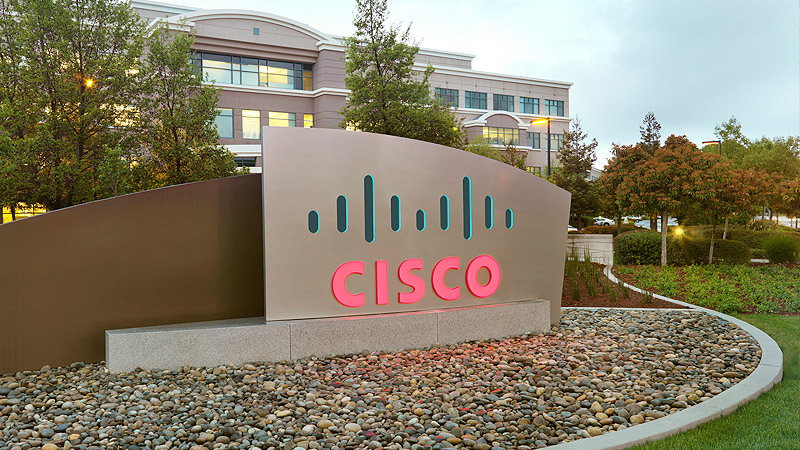Company is first to integrate scalability of routing and performanceof switching
- Cisco's New Tag Switching Technology
- The Industry's First Fully Integrated ATM/IP Switching Wide-Area System
SAN JOSE, Calif. - September 16, 1996 - Cisco Systems, Inc. today announceda comprehensive suite of products and technologies for scaling the Internet.
Cisco is making major enhancements to its Cisco StrataCom BPX switchesand 7500 series routers that will quadruple the performance of these systems.
The company also is introducing a new Cisco IOS technology called TagSwitching. Tag Switching will scale the Internet by integrating routingand switching on existing platforms.
These solutions extend the leading role Cisco has played, during thepast 12 years, in building and scaling the Internet. According to the YankeeGroup, Cisco routers now carry more than 80 percent of Internet backbonetraffic.
"Cisco is the first vendor to address the need of Internet serviceproviders (ISPs) to improve network performance and differentiate theirservices," said Tom Nolle, president of CIMI Corporation, atelecommunicationsconsultancy based in Voorhees, N.J. "Cisco also is enabling ISPs tosell quality of service levels and boost their revenue with new informationforms like voice or video."
Service providers are struggling to keep pace with Internet traffic volumesthat are growing exponentially and with emerging, high-bandwidth, time-sensitivemultimedia applications.
Cisco's solutions, made possible by the combined strengths of Cisco andStrataCom, will meet service providers' future requirements for scalingthe Internet and offering new, advanced services. The solutions apply tothree specific parts of the Internet:
- the backbone, or core;
- the service node, or edge, where users access the Internet; and
- the interconnection point, or border, where ISPs connect to eachother.
Delivering Speed at the Internet's Core
The routers and switches that service providers deploy at the core ofthe Internet must have the capacity to handle a large and growing numberof incoming data flows, efficiently balance that load over available linksand forward data as quickly as possible to network interconnection points.
To meet these requirements, Cisco is introducing new Broadband SwitchingModules (BXMs) for the StrataCom BPX that will boost performance by fourtimes. (See accompanying release, "Industry's First Fully IntegratedATM/Frame Switching Wide-Area System.") At the same time, the companyis delivering a four-fold increase in the system capacity of its 7500 seriesrouters through a combination of new, high-performance system processorsand new high-speed, high-density interfaces. These include new multi-port,high-speed serial interface (HSSI) port adapters (daughter cards) for the7500 series' next-generation Versatile Interface Processors (VIP2s).
How Tag Switching Works in the Internet
Cisco's new Tag Switching technology will scale the Internet by combiningthe performance and traffic management capabilities of Layer 2 (data linklayer) switching with the scalability and flexibility of Layer 3 (networklayer) routing. (See accompanying release, "Cisco's New Tag Switching Technology.")
Tag Switching enables routers at the edge of the Internet to apply tagsto traffic flows based on traditional, Layer 3 routing protocols. Devicesin the core of the network can then switch traffic according to simple tagsalong its route.
Tag Switching in the core can be performed by existing routers or byswitches. These systems will run Tag Switching software, which distributesinformation about tags to all routers and switches in the network usinga Tag Distribution Protocol.
Tag Switching will bring three key benefits to service providers:
- It helps scale networks by allowing Layer 2 switches to participate in Layer 3 routing.
- It simplifies traffic tuning in router-based networks by integrating Layer 2 virtual circuit capabilities.
- It enables higher performance platforms by simplifying routing and switching functions.
Scaling IP Switching
According to Nolle, "Tag Switching is a leap ahead of past IP switchingapproaches because it optimizes the relationship between Layer 3 and theframe/cell layer in transporting information. It's also the only approachthat we can be sure is scalable to the level of the Internet. How big doIP networks have to be? With Tag Switching, you don't need to worry."
Tag Switching resolves fundamental scalability issues not addressed bysome IP switching implementations. It alleviates Layer 3 bottlenecks inherentin some IP switching implementations because large volumes of traffic canbe aggregated over paths identified with destination address tags. Otherapproaches require the set-up of individual virtual circuits for eachsource-destinationflow.
Tag Switching technology is expected to be available for field trialson the Cisco 7500 series and the " + name +""; }); } //////////////End - Executives Landing Page Hot Fixes /////////////
